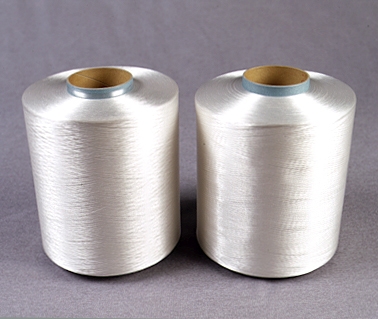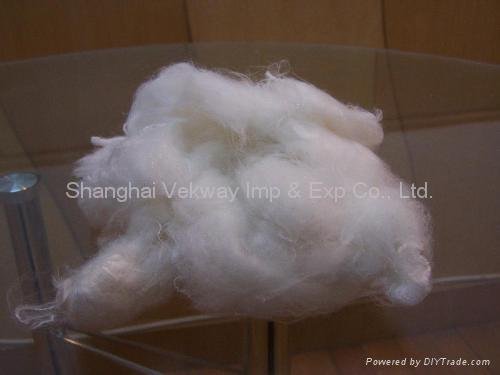Acetate: Cellulose Acetate; Triacetate where not less than 92% of the cellulose is acetylated
Acrylic: At least 85% Acrylonitrile unite
Aramid: Polyamide in which at least 85% of the amide linkages are directly attached to two aromatic rings
Glass: Glass
Modacrylic: Less than 85% but at least 35% acrylonitrile units
Nylon: Polyamide in which less than 85% of the amide linkages are directly attached to two aromatic rings
Olefin: At least 85% ethylene, propylene, or other olefin units
Polyester: At least 85% ester of a substituted aromatic carboxylic acid including but not restricted to substituted terephthalate units and parasubstituted hydroxybenzoate units
Rayon: Regenerated cellulose with less than 15% chemically combined substituents
Saran: At least 80% vinylidene chloride
Spandex: Elastomer of at least 85% of a segmented polyurethane
Vinal: At least 50% vinyl alcohol units and at least 85% total vinyl alcohol and acetal units
Subscribe to:
Post Comments (Atom)











10 comments:
Without many of these our lives would be changed immensely
hehe
good information!
thanks for the info!
Nice, thanks for this info. Had no idea about all this.
there's loads more!
this site's immensely rubbish!!!!!!!!!!!!!!!!!!!!!!!!!!!!!!!!!!!!!!!!!!!!!!!!!!!!!!!!!!!!!!!!!!!!!!!!!!!!!!!!!!!!!!!!!!!!!!!!!!!!!!!!!!!!!!!!!!!!!! whoever created this might aswell delete the site, useless
very well explained. thanks for the information.
MCX Intraday Tips
I am really impressed with your blog article, such great & useful knowledge you mentioned here. Your post is very informative. I have read all your posts and all are very informative. Thanks for sharing and keep it up like this.
HP, Canon & Brother printer services center in nashik
PP Yarn Manufacturer is a versatile and durable material widely used in industries like agriculture, construction, and packaging. This yarn is created through a fibrillation process that gives it a mesh-like structure, enhancing its tensile strength and flexibility. As a result, PP fibrillated yarn is an excellent choice for applications such as tying, stitching, and reinforcing.
In agriculture, it is commonly used in the production of shade nets and crop support systems, helping plants grow in structured environments. In construction, it serves as reinforcement in concrete to reduce shrinkage and cracking. Its lightweight, cost-effectiveness, and resistance to UV rays, chemicals, and moisture make it a valuable and reliable choice across various industrial applications.
Post a Comment